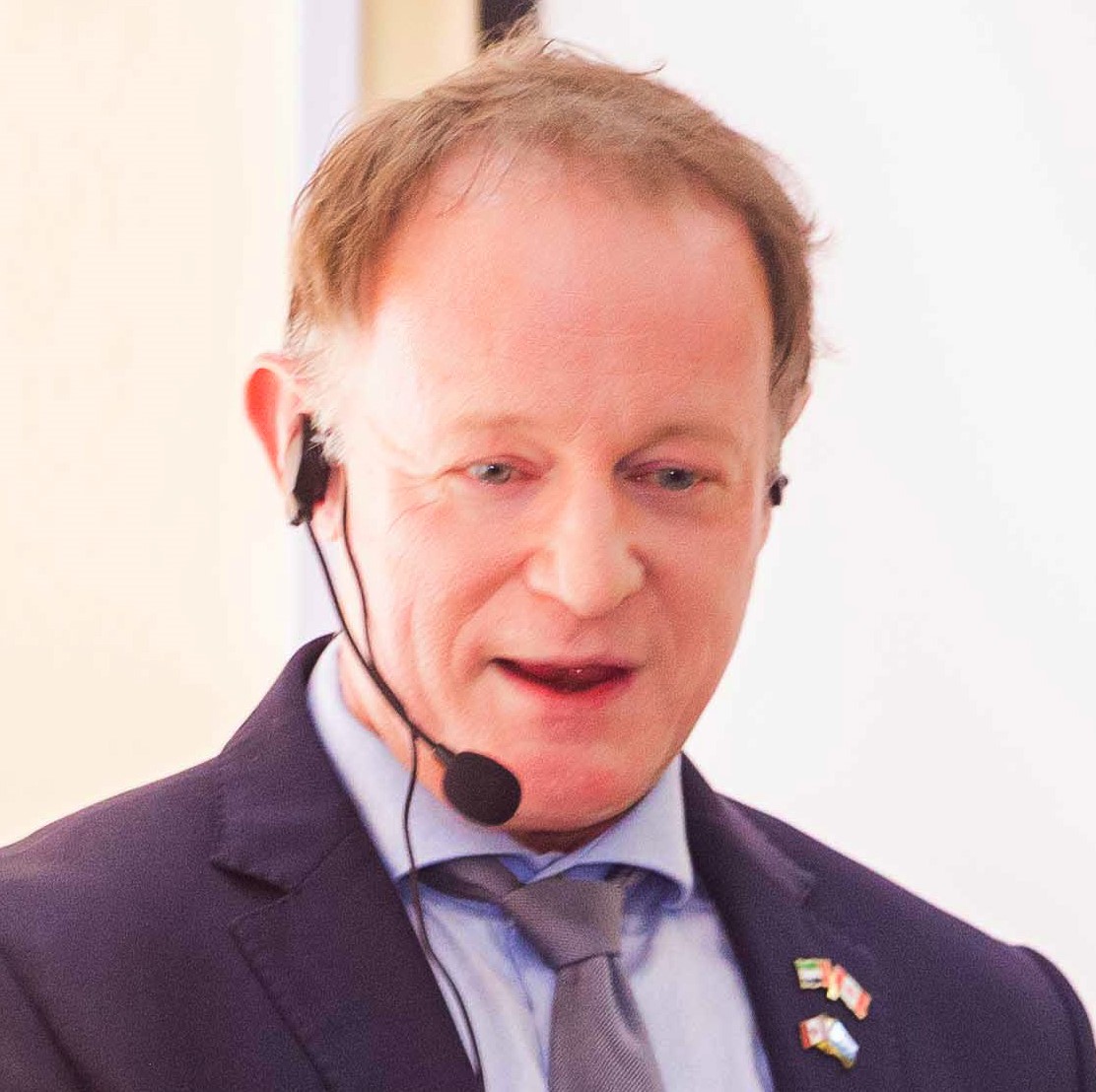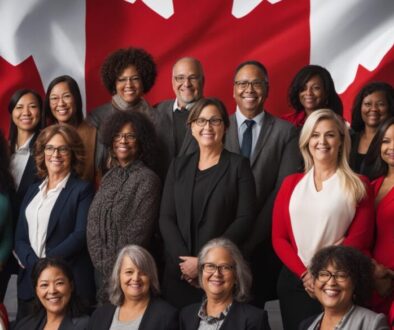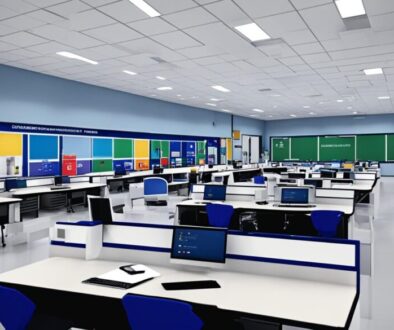Building Global Education Capacity Worldwide

Welcome to an enlightening journey of education capacity building on a global scale. In an increasingly interconnected world, ensuring access to quality education for all learners is imperative. From remote and rural schools to resource and infrastructure hurdles, recruiting and retaining teachers globally, and designing culturally relevant curriculum, every aspect plays a vital role in developing global education capacity.
The need for international education programs and worldwide education initiatives cannot be overstated. Capacity development in education is the driving force behind empowering individuals and communities, bridging gaps, and fostering growth.
By building global education capacity, we seek to create a world where every learner has the opportunity to thrive, regardless of their geographical location or socio-economic background. It is through education that we can unlock potential, promote understanding, and build a brighter future for all.
Join us as we delve into sustainable models for rural and remote schools, overcoming resource and infrastructure hurdles, recruiting and retaining teachers globally, designing culturally relevant curriculum, addressing language barriers, fostering partnerships with local leaders and communities, monitoring and evaluating education programs, promoting inclusion and safety, utilizing open educational resources (OERs), and evolving approaches to international development.
Together, let us embark on a transformative journey of building global education capacity worldwide.
Contents [hide]
- 1 Sustainable Models for Rural and Remote Schools
- 2 Overcoming Resource and Infrastructure Hurdles Abroad
- 3 Recruiting and Retaining Teachers Globally
- 4 Designing Culturally Relevant Curriculum
- 5 Addressing Language Barriers in Global Classrooms
- 6 Partnering with Local Leaders and Communities Abroad
- 7 Monitoring and Evaluating Global Education Programs
- 8 Promoting Inclusion and Safety in Global Learning Environments
- 9 The Promise of Open Educational Resources (OERs)
- 10 Evolving Approaches to International Development
- 11 FAQ
- 11.1 What is global education capacity building?
- 11.2 Why is building global education capacity important?
- 11.3 How can sustainable models support education in rural and remote areas?
- 11.4 What are some challenges in overcoming resource and infrastructure hurdles in education?
- 11.5 How can teacher recruitment and retention be improved globally?
- 11.6 Why is designing culturally relevant curriculum important?
- 11.7 How can language barriers be addressed in global classrooms?
- 11.8 How can partnering with local leaders and communities abroad contribute to education capacity building?
- 11.9 Why is monitoring and evaluating global education programs important?
- 11.10 How can inclusion and safety be promoted in global learning environments?
- 11.11 What are Open Educational Resources (OERs) and how can they impact global education?
- 11.12 How can evolving approaches to international development contribute to global education capacity building?
- 12 Source Links
Sustainable Models for Rural and Remote Schools
Sustainable models for rural and remote schools are essential for ensuring education access and quality in underserved areas. These models aim to improve infrastructure, provide access to quality curriculum and resources, and support teacher training initiatives in remote areas. By developing sustainable models, education can be extended to students in rural and remote locations, enabling them to access the same opportunities as their urban counterparts.
Implementing innovative solutions is a key aspect of sustainable models for rural and remote schools. Some of these solutions include:
- Mobile science labs: Bringing science education directly to students by equipping mobile laboratories with necessary equipment and materials.
- Solar-powered computer labs: Utilizing renewable energy sources to power computer facilities, expanding digital literacy in remote areas.
- Refurbishing school buildings: Renovating or constructing school buildings to provide safe and conducive learning environments.
- Utilizing technology: Bridging geographical barriers by leveraging technology to deliver educational content and connect students with teachers and resources.
Through the implementation of these sustainable models, rural and remote schools can overcome the challenges of limited resources and geographical isolation. Students in these areas gain access to quality education, empowering them to reach their full potential and contribute to the progress of their communities.
| Benefits of Sustainable Models for Rural and Remote Schools | Challenges Addressed |
|---|---|
| Improved infrastructure | Lack of proper school facilities |
| Access to quality curriculum and resources | Limited availability of educational materials |
| Enhanced teacher training initiatives | Lack of qualified teachers in remote areas |
| Equal opportunities for rural and remote students | Geographical barriers to education |
Overcoming Resource and Infrastructure Hurdles Abroad
Overcoming resource and infrastructure hurdles is a critical step in building global education capacity. Many countries face challenges in providing adequate resources and infrastructure for schools, such as textbooks, technology, and school buildings. These hurdles can significantly impact the quality of education and restrict students’ opportunities for learning and growth.
In order to address these challenges, it is essential to focus on education infrastructure improvement and the procurement of technology. By investing in the improvement of education infrastructure, countries can create a supportive environment that enhances teaching and learning. This includes constructing new school buildings, refurbishing existing facilities, and ensuring access to clean water and sanitation.
The procurement of technology also plays a crucial role in overcoming resource and infrastructure hurdles. Classroom technology, such as computers, tablets, and educational software, can revolutionize the learning experience by providing access to a wealth of educational resources. By equipping schools with the necessary technology, students can engage with interactive learning materials, collaborate with their peers, and develop critical digital literacy skills.
To tackle these hurdles, partnerships with governments, NGOs, and international organizations are crucial. These partnerships can help secure funding and support for new school construction projects, refurbishing school buildings, and providing necessary resources such as student laptop donations. By working together, we can ensure that students around the world have access to quality education.

The image above illustrates the importance of overcoming resource hurdles in education. It serves as a reminder that investing in education infrastructure and technology is necessary to create a conducive learning environment for students worldwide.
| Challenges | Solutions |
|---|---|
| Limited access to textbooks | Investing in textbook procurement and distribution programs |
| Inadequate school buildings | Constructing new school buildings or refurbishing existing facilities |
| Lack of classroom technology | Procuring computers, tablets, and educational software for schools |
| Insufficient resources for teachers | Providing necessary teaching materials and resources |
It is imperative that we continue to address these resource and infrastructure hurdles in education. By investing in education infrastructure improvement and the procurement of classroom technology, we can create inclusive and equitable learning environments that empower students worldwide to reach their full potential.
Recruiting and Retaining Teachers Globally
Recruiting and retaining qualified teachers is a critical aspect of building global education capacity. Many developing countries face challenges in attracting and retaining teachers due to factors such as low salaries, inadequate training, and difficult working conditions. To address these challenges, teacher training initiatives and skills training programs can be implemented to enhance the capabilities of educators and create a supportive environment for their professional growth.
One effective strategy is to provide professional development opportunities for teachers. This can include workshops, conferences, and courses that enable educators to enhance their teaching skills, learn new instructional methods, and stay updated with the latest research and pedagogical approaches. Additionally, mentoring programs allow experienced teachers to guide and support new educators, fostering a sense of community and helping retain talented individuals in the teaching profession.
Incentives play a crucial role in attracting and retaining teachers in developing countries. Offering competitive salaries and benefits can encourage qualified professionals to choose teaching as a career and reduce the turnover rate. Government policies that prioritize education funding can help ensure adequate resources for teacher compensation.
In addition to these initiatives, it is vital to invest in the overall improvement of working conditions and create a conducive environment for educators. This includes providing necessary resources, such as teaching materials and technology, and promoting teacher well-being through supportive school leadership, collaborative workspaces, and opportunities for professional growth.
By implementing these strategies and investing in recruiting and retaining teachers, developing countries can build a strong and skilled teaching workforce to meet the educational needs of all learners. With well-trained and motivated teachers, the quality of education improves, leading to positive outcomes for students and empowering future generations.
Designing Culturally Relevant Curriculum
Designing culturally relevant curriculum is crucial for promoting inclusive and equitable education. By developing curriculum materials and resources that reflect the cultural diversity of students and their communities, we can create meaningful and relatable educational experiences. Collaborating with local educators, indigenous communities, and curriculum development partnerships is key to achieving this goal.
Emphasizing indigenous knowledge and honoring diverse cultural perspectives helps students connect with their heritage and see themselves represented in their education. It also fosters a deeper understanding and appreciation of different cultures. By incorporating culturally relevant content, we can empower students to become active participants in their own learning journey.

Through collaboration with local educators, we can gather insights and incorporate community-specific knowledge into the curriculum. By engaging with indigenous communities, we can ensure that their voices, histories, and contributions are accurately represented in the educational materials. Additionally, partnering with curriculum development organizations enables us to draw on their expertise in creating culturally responsive and engaging resources.
Designing a culturally relevant curriculum goes beyond simply adding diverse content. It involves nurturing a learning environment that celebrates cultural diversity, encourages dialogue, and promotes empathy and understanding among students. By embracing diverse perspectives and experiences, we foster a sense of belonging and create an inclusive educational space.
By designing curriculum that is culturally relevant, education becomes more inclusive, engaging, and empowering for learners from diverse backgrounds. It equips students with the knowledge and skills they need to thrive in a multicultural society and prepares them to contribute meaningfully to the world.
Addressing Language Barriers in Global Classrooms
Addressing language barriers in global classrooms is crucial for ensuring that all students have equal opportunities to learn and succeed. Language barriers can pose significant challenges to students who are non-native speakers or have different language backgrounds. It is essential to provide the necessary support and resources to help these students overcome language obstacles and thrive academically.
The Importance of Language Localized Resources
One effective way to address language barriers is by providing language localized resources. These resources are specifically designed to support students in understanding and engaging with the curriculum in their native language. Language localized textbooks, reading materials, and digital resources can help students access content more effectively, improving their comprehension and overall learning outcomes.
A key advantage of language localized resources is that they promote inclusivity by recognizing and valuing the diverse linguistic backgrounds of students. By providing materials that are culturally relevant and linguistically accessible, educators can create a more inclusive learning environment that supports the needs of all learners.
Implementing Multilingual Education Strategies
In addition to language localized resources, implementing multilingual education strategies can enhance language acquisition and proficiency among students. These strategies involve creating opportunities for students to learn and use multiple languages in the classroom.
This can be achieved through bilingual education programs, where instruction is provided in both the students’ native language and the language of instruction. By offering instruction in the students’ first language, they can develop a strong foundation in academic content while gradually acquiring proficiency in the target language.
Furthermore, incorporating multilingualism into the classroom through activities such as language exchanges, language buddies, and multicultural projects can foster linguistic diversity and cross-cultural understanding among students.
Supporting Language Acquisition
Supporting language acquisition is essential for students who are learning a new language. Providing additional language instruction, both inside and outside the classroom, can help these students develop their language skills and build confidence in their ability to communicate.
Teacher training programs that focus on language instruction techniques and methodologies can equip educators with the necessary skills to effectively support language acquisition. By implementing research-based strategies for language learning, teachers can create immersive language environments that promote active engagement and interaction.
Technology can also play a vital role in supporting language acquisition. Online language learning platforms, language learning apps, and digital language resources can provide students with additional practice and reinforcement outside the traditional classroom setting.

Creating an Inclusive Learning Environment
Addressing language barriers is not just about language instruction; it is about creating an inclusive learning environment that values and respects linguistic diversity. Educators should encourage students to embrace their native languages and cultures while fostering an environment of mutual respect and understanding.
By celebrating linguistic diversity and promoting language diversity in the classroom, students can develop a sense of pride in their heritage and linguistic abilities. This inclusive approach not only benefits language learners but also enriches the overall educational experience for all students.
In conclusion, addressing language barriers in global classrooms is essential for fostering inclusive and equitable education. By providing language localized resources, implementing multilingual education strategies, supporting language acquisition, and creating an inclusive learning environment, schools can ensure that all students have the opportunity to thrive academically and develop their linguistic abilities.
Partnering with Local Leaders and Communities Abroad
Building global education capacity requires collaboration and partnership with local leaders and communities. By working closely with community leaders, parents, and local organizations, we can identify and address the specific education needs and challenges of each region. Engaging the community in education collaborations and initiatives enhances community ownership and involvement in decision-making processes, leading to more effective and sustainable solutions.
Through meaningful partnerships, we can leverage the knowledge, skills, and resources of local leaders and communities to develop sustainable education models that meet the unique needs of learners. These partnerships foster community engagement and create a sense of shared responsibility in improving education outcomes. By empowering local leaders and communities, we can create a supportive environment for education and contribute to the overall development of the community.
Effective community partnerships also allow for the sharing of best practices and knowledge exchange. Local leaders and community members often have valuable insights and experiences that can inform education policies and practices. By collaborating with them, we can ensure that our initiatives are culturally responsive, contextually relevant, and aligned with community values and aspirations.
Furthermore, partnering with local leaders and communities abroad helps to build trust and strengthen relationships. It demonstrates our commitment to working in collaboration rather than imposing solutions from outside. By recognizing the expertise and unique perspectives of local leaders, we foster a sense of mutual respect and create a more inclusive and effective education system.
Through community partnerships, we can harness the collective wisdom and energy of local leaders and communities to drive positive change in education. By engaging in meaningful collaborations, we can build sustainable education systems that address the specific needs of learners and empower communities to shape their own educational pathways.

Monitoring and Evaluating Global Education Programs
Monitoring and evaluating global education programs is essential for ensuring their effectiveness and impact. It involves establishing systems to collect relevant data, conducting program assessments, and using data-driven decision-making processes. By monitoring and evaluating education programs, policymakers and educators can gain valuable insights into program outcomes and make informed decisions for improvement.
Effective monitoring and evaluation allow for the identification of strengths and weaknesses within education programs. Through the collection and analysis of data, decision-makers can understand the impact of various initiatives and interventions. This enables them to allocate resources strategically, optimize program delivery, and enhance overall program effectiveness.
Data-driven decision-making is a critical component of monitoring and evaluation in global education programs. By using evidence-based strategies and insights from collected data, policymakers and educators can make informed choices regarding program design, assessment, and improvement. This approach ensures that program decisions are grounded in reliable information, leading to more targeted and impactful interventions.
Furthermore, monitoring and evaluation processes enable continuous learning and improvement within education systems worldwide. By regularly assessing programs and analyzing data, stakeholders can identify areas for growth, implement evidence-based practices, and adapt interventions to meet evolving needs. This iterative process helps to foster innovation and drive positive change in education systems globally.
To illustrate the importance of monitoring and evaluating education programs, consider the following scenario:
A country implements a new education program aimed at improving literacy rates among primary school students. By collecting data on student performance, teacher feedback, and program implementation, policymakers can identify areas where the program is succeeding and areas that may require adjustments. This data-driven approach helps policymakers make informed decisions about resource allocation, curriculum development, and ongoing professional development for teachers. As a result, they can continuously improve the program to ensure its effectiveness and positive impact on student learning.
Overall, monitoring and evaluation are vital processes for ensuring the success and impact of global education programs. By collecting, analyzing, and utilizing data, decision-makers can make evidence-based decisions, optimize resource allocation, and drive continuous improvement. Through these efforts, education systems worldwide can strive towards providing equitable and quality education for all learners.

Promoting Inclusion and Safety in Global Learning Environments
Promoting inclusion and safety in global learning environments is crucial for creating equitable and supportive educational experiences for all students. By adopting inclusive practices and implementing strategies to ensure safety, students from diverse backgrounds can thrive in their educational journeys.
Adopting Inclusive Practices
Inclusion in education refers to the integration of students with diverse abilities, identities, and backgrounds into regular classrooms. Creating inclusive environments involves catering to the diverse needs of learners, including students with disabilities, those from marginalized communities, and refugees or displaced populations.
Teachers and educators can foster inclusion by:
- Providing differentiated instruction to accommodate different learning styles and abilities
- Offering individualized support and resources to students who require additional assistance
- Promoting a culture of acceptance and respect for diversity
- Encouraging collaboration and peer learning among students
By adopting inclusive practices, global learning environments become empowering spaces where all students can access equal opportunities for learning and growth.
Ensuring Safety and Well-being
Safety in education is another critical aspect of promoting inclusive and supportive learning environments. Students need to feel safe and secure in their classrooms and schools in order to fully engage in their education. Implementing strategies to ensure safety and well-being in educational settings is essential.
Some measures to enhance safety and well-being include:
- Implementing trauma-informed teaching methods to support students who have experienced trauma or adverse life events
- Promoting social-emotional learning to help students develop resilience, self-awareness, and positive relationships
- Establishing support systems and resources for displaced students, such as counseling services and language support
- Creating a culture of zero tolerance for bullying, discrimination, and harassment
When students feel safe and supported, they are more likely to engage in their education, build positive relationships, and achieve academic success.
Image:

Promoting inclusion and safety in global learning environments is instrumental in creating a truly equitable education system. By adopting inclusive practices and ensuring the safety and well-being of students, we can empower learners from all backgrounds to thrive and contribute to a more diverse and harmonious society.
The Promise of Open Educational Resources (OERs)
Open Educational Resources (OERs) have the potential to revolutionize the accessibility and affordability of quality education worldwide. These freely available educational materials can be shared, modified, and used by educators and learners globally, opening up new possibilities for teaching and learning.
OERs encompass a wide range of digital content, including textbooks, videos, interactive modules, and more. By utilizing OERs, educators can tap into a vast pool of resources to enhance their teaching materials and approaches. Learners, on the other hand, can access a wealth of knowledge from various sources, enabling them to explore different perspectives and foster critical thinking skills.
The sharing aspect of OERs is central to their transformative power. Educators, institutions, and countries can collaborate and exchange knowledge, reducing barriers to access and promoting collaborative learning. By harnessing the potential of OERs, education becomes more inclusive, affordable, and adaptable to the diverse needs of learners around the world.

The benefits of OERs extend beyond accessibility and cost savings. These resources can be modified and customized to suit different educational contexts, allowing educators to tailor content to their students’ needs and cultural backgrounds. Furthermore, OERs foster a culture of collaboration and knowledge sharing, encouraging educators to contribute their own materials and expertise to the global education community.
With the increasing availability of digital technologies, OERs have become more accessible and easier to incorporate into educational settings. Educators can adapt OERs to various formats and delivery methods, catering to the diverse learning preferences of their students.
Evolving Approaches to International Development
In today’s interconnected world, evolving approaches to international development are crucial for advancing education initiatives and addressing global challenges. It is imperative to align these initiatives with the global agenda for sustainable development to ensure progress towards the United Nations Sustainable Development Goals (SDGs), with a particular focus on inclusive and quality education for all.
One key aspect of evolving approaches to international development is the fostering of global partnerships and collaborations. By working together, countries can combine their strengths, resources, and expertise to address education challenges on a global scale. These partnerships enable the sharing of best practices, innovative solutions, and lessons learned, ultimately leading to more effective and impactful education programs.
Adopting innovative and collaborative approaches to international development is essential for building resilient and sustainable education systems that benefit learners worldwide. It involves embracing emerging technologies, exploring new pedagogical approaches, and promoting knowledge exchange among diverse stakeholders. By harnessing the power of innovation and collaboration, we can create transformative educational experiences that prepare learners for the challenges and opportunities of the 21st century.
As we continue to evolve our approaches to international development, let us remember that education is not only a fundamental human right but also a catalyst for societal progress and global prosperity. By investing in education initiatives, fostering global partnerships, and working towards the SDGs, we can create a brighter future for all, where every individual has the opportunity to fulfill their potential and contribute to a more peaceful and sustainable world.
FAQ
What is global education capacity building?
Global education capacity building refers to the efforts and initiatives aimed at enhancing education systems globally. It involves improving education infrastructure, providing resources and training for teachers, designing culturally relevant curriculum, addressing language barriers, fostering partnerships with local communities, monitoring and evaluating education programs, promoting inclusion and safety, utilizing open educational resources (OERs), and evolving approaches to international development.
Why is building global education capacity important?
Building global education capacity is crucial for ensuring that every learner, regardless of their geographical location or background, has access to quality education and the necessary resources to succeed. It helps promote equity and inclusivity in education, improves the quality of education programs, fosters global citizenship and cultural competence, and contributes to the achievement of sustainable development goals.
How can sustainable models support education in rural and remote areas?
Sustainable models for rural and remote schools are essential for ensuring education access and quality in underserved areas. These models involve implementing innovative solutions such as mobile science labs and solar-powered computer labs, refurbishing school buildings, and utilizing technology to bridge geographical barriers. By developing sustainable models, education can be extended to students in rural and remote locations, enabling them to access the same opportunities as their urban counterparts.
What are some challenges in overcoming resource and infrastructure hurdles in education?
Many countries face challenges in providing adequate resources and infrastructure for schools, such as textbooks, technology, and school buildings. These hurdles often arise due to limited funding, lack of access to resources, and insufficient infrastructure development. Addressing these challenges requires investments in education infrastructure improvement, procuring classroom technology, and ensuring access to quality resources through partnerships with governments, NGOs, and international organizations.
How can teacher recruitment and retention be improved globally?
Recruiting and retaining qualified teachers is crucial for achieving global education goals. To address this, teacher training initiatives and skills training programs can be implemented to enhance the capabilities of educators. This includes providing professional development opportunities, mentoring programs, and incentives to attract and retain teachers. By investing in teacher recruitment and retention strategies, countries can ensure that qualified educators are available to meet the educational needs of all learners.
Why is designing culturally relevant curriculum important?
Designing culturally relevant curriculum is essential for promoting inclusive and equitable education. It involves developing curriculum materials and resources that reflect the cultural diversity of students and their communities. This can be achieved through collaboration with local educators, indigenous communities, and curriculum development partnerships. Emphasizing indigenous knowledge and honoring diverse cultural perspectives helps create a curriculum that is meaningful and relatable to students.
How can language barriers be addressed in global classrooms?
Addressing language barriers in global classrooms is crucial for ensuring that all students have equal opportunities to learn and succeed. This involves providing language localized resources, implementing multilingual education strategies, and supporting language acquisition for students with different language backgrounds. It also includes training teachers in language instruction techniques and promoting the use of technology for language learning.
How can partnering with local leaders and communities abroad contribute to education capacity building?
Partnering with local leaders and communities abroad is an effective approach to building global education capacity. This involves collaborating with community leaders, parents, and local organizations to identify and address the specific education needs and challenges of a region. Engaging the community in education collaborations and initiatives enhances community ownership and involvement in education decision-making processes, leading to sustainable education solutions that meet the unique needs of learners and contribute to community development.
Why is monitoring and evaluating global education programs important?
Monitoring and evaluating global education programs is essential for ensuring their effectiveness and impact. This involves establishing systems to collect relevant data, conducting program assessments, and using data-driven decision-making processes. By monitoring and evaluating education programs, policymakers and educators can identify strengths and weaknesses, make informed decisions, and implement evidence-based strategies for improvement. This process allows for continuous learning and improvement in education systems worldwide.
How can inclusion and safety be promoted in global learning environments?
Promoting inclusion and safety in global learning environments is crucial for creating equitable and supportive educational experiences for all students. This involves adopting inclusive practices that cater to the diverse needs of learners, including students with disabilities, those from marginalized communities, and refugees or displaced populations. It also involves implementing strategies to ensure the safety and well-being of students in educational settings, such as trauma-informed teaching methods, social-emotional learning adoption, and support systems for displaced students.
What are Open Educational Resources (OERs) and how can they impact global education?
Open Educational Resources (OERs) are freely available educational materials that can be shared, modified, and used by educators and learners globally. This includes digital textbooks, videos, interactive modules, and other digital content. Utilizing OERs enables the sharing of knowledge and resources among educators, institutions, and countries, reducing barriers to access and promoting collaborative learning. By harnessing the power of OERs, education becomes more inclusive, affordable, and adaptable to the diverse needs of learners.
How can evolving approaches to international development contribute to global education capacity building?
Evolving approaches to international development in the context of education involve aligning education initiatives with the global agenda for sustainable development. This includes supporting efforts to achieve the United Nations Sustainable Development Goals (SDGs) related to education, such as ensuring inclusive and quality education for all. It also involves fostering global partnerships and collaborations to address education challenges at a global scale. By adopting innovative and collaborative approaches to international development, countries can work together to build resilient and sustainable education systems that benefit learners worldwide.
Source Links
- https://www.studyabroadcapacitybuilding.org/
- https://ourworldindata.org/global-education
- https://sites.ed.gov/international/files/2022/04/ED-IAO-International-Education-Strategy-2022.pdf

Martin Doherty is the CEO of Ethos Education & Canadian Global Academy : the exclusive authorized provider of the globally 3rd ranked Ontario Ministry of Education‘s renowned K12 curriculum and Digital Learning Platform beyond the Canadian borders.
Through their School Partnership Program, they empower schools worldwide to attain Canadian Accreditation, offering them the opportunity to establish themselves as Canadian Accredited schools. Additionally, home-based businesses can run their own Canadian Accredited micro-school. Contact them today to learn more!

Martin Doherty is the CEO of Ethos Education & Canadian Global Academy : the exclusive authorized provider of the renowned 3rd globally ranked Ontario Ministry of Education‘s curriculum and Digital Learning Platform outside of Canada. He is also the founder the cutting edge magazine, Education Distruptor.
Through our School Partnership Program, we empower schools worldwide to attain Canadian Accreditation, providing the opportunity to establish themselves as Canadian Accredited schools. Additionally, home-based businesses can run their own Canadian Accredited Micro-School. Contact us today to learn more!






